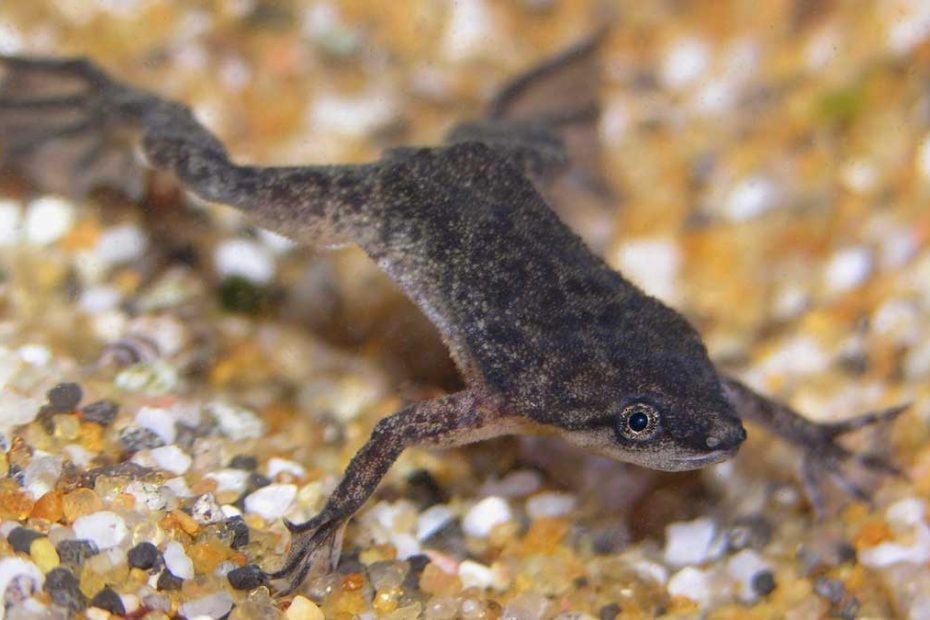Amphibian lovers always prefer to have one or multiple African Dwarf Frogs in their aquariums. The reason is their appearance and naughty behavior. But, getting the original African Dwarf frog is crucial; many become confused by mixing them with African Clawed frogs.
So, what are African Dwarf frog colors? Brown-colored African dwarf frogs are the most common and easy-to-get ones. There are also ADFs whose colors can be green, orange, patterned, and white.
These frog species give life to the glass-based small aquatic world and are fish-friendly. Let’s discuss more about the variety of that color of ADFs so you get the right one.
Colors of African Dwarf Frogs: In-detail Discussion
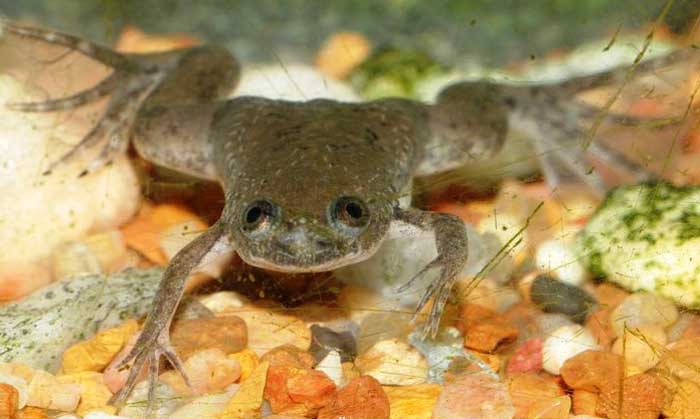
In this section, we dive deeper to explore African dwarf frogs with different colors. To be noted, all African Dwarf frogs are usually 2 to 3 inches in length.
Brown ADF
This is the most common color of the African dwarf frog. These frogs exhibit high activity levels, and there are very few moments when you can find them inactive. When at rest, these frogs showcase a peculiar behavior called “burbling.”
Here, they float on the water’s surface with fully extended limbs. This floating, often with limbs outspread, is a normal aspect of their behavior. Brown-colored African dwarf frogs are friendly to fish, snails, etc. Like many frogs, brown ADFs also require an ample amount of sleep.
They can even sleep for up to 12 hours a day if they feel that there are no perceived threats from predators. We suggest you keep them in a pair. The reason is that by nature’s rule, they are used to staying in a group environment.
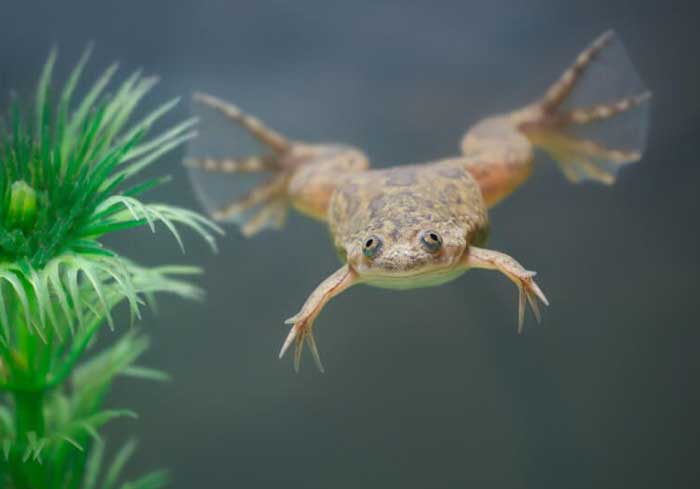
Green ADF
The green African dwarf frog’s scientific name is Hymenochirus boettgeri. This species of ADF was discovered by De Witte in 1930. Petting a green-color African Dwarf Frog is an excellent choice for beginners. These frogs are easy to take care of.
You can consider that the caring procedure is as simple as looking after a goldfish. The added advantage is that they bring a splash of natural beauty to any aquarium with their vibrant green colors. But unlike goldfish, these frogs have a unique diet.
Green color ADFs only eat food that sinks to the bottom of the tank! For this beautiful creature, we suggest you keep them in a pair.
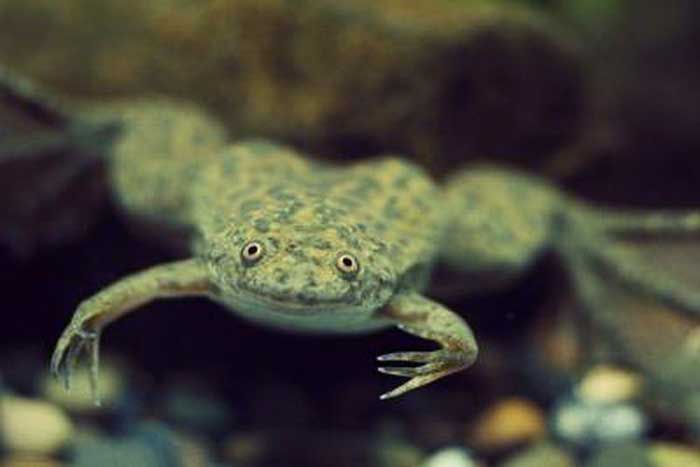
Patterned ADF
Patterned African dwarf frogs are very similar to the brown ADFs. The difference is in the spot markings. The patterned ones have highly noticeable and larger black color spots on their skins. The spots can also be dark gray.
However, this aquatic frog is native to the waterways of Central and West Africa. These frogs are adored by many for their small size, easygoing nature, and eye-catching patterns. These little creatures are carnivores.
They chow down on live and frozen treats like brine shrimp, bloodworms, and daphnia. So, if you’re thinking about a pet that’s small, chill, and has a bit of style, the Patterned African Dwarf Frog can be the perfect one.
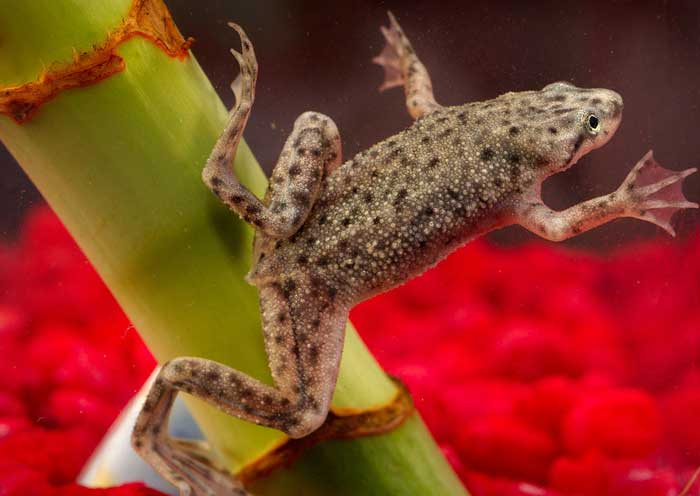
Orange and White ADF
Well, the identification of these two color variants of ADFs is a bit critical. These are very rare breeds. We suggest you be aware of some unethical sellers who sell African Clawed frogs in the name of white, orange, or albino African dwarf frogs.
As a common amphibian lover and not a biologist, it will be really tough for you to distinguish between the dwarf ones and the clawed ones. Still, to be sure, you have to observe if there is any aggressive behavior in your orange or white ADF. If it shows any aggressive behavior, it is now an ADF. It is an African Clawed frog.
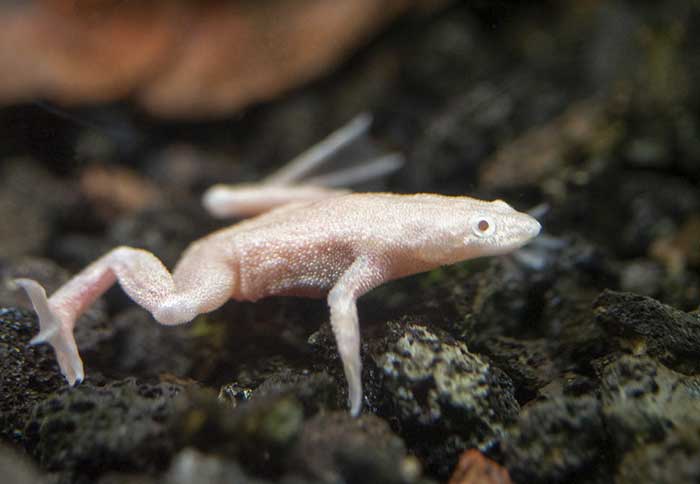
Also, if it is eating fish in the aquarium and getting larger within a shorter period, then you become sure that it’s definitely a clawed one. However, orange and white African dwarf frogs are also naughty and do not eat the coexisting fishes in the tank.
If you can get a real orange or white African dwarf frog, you are really lucky, as they are very rare to find. And it’s become more challenging to get the real one in the traditional marketplace. So, if you are deciding to have this rare piece, you must go to a reputed and trusted seller.
Watch this YouTube video to learn more about Albino Dwarf Frog’s behavior, care, etc.
Table: Price of Different Color African Dwarf Frog
The table below is designated to give you an idea of how much each frog can cost based on color.
| ADF Color | Price per pcs |
|---|---|
| Brown | $5-$10 |
| Green | $15.99-$39.99 |
| Scattered | $5-$10 |
| Orange and white | Upon negotiation |
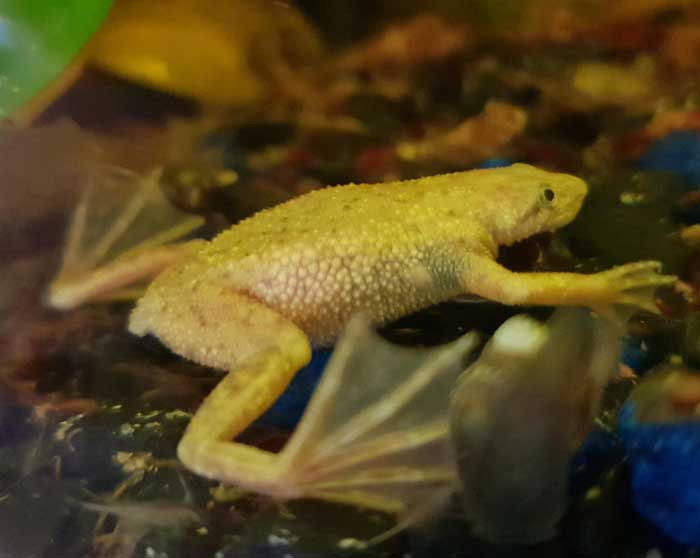
People Also Ask
In this section, we answer some of the most common questions regarding the colors of African Dwarf frogs.
Albino African dwarf frogs are very rare as pets and in the wild as well. The reason is that their reproduction is less, and they are highly exposed to other predators. Most importantly, they have a very short lifespan, which makes them unable to pass on their unique color.
It is called “red-leg” syndrome. Here, the legs, bottom part of the frog, and eyes slowly start to become pink. The reason is that your frog is suffering from anemia.
In general, ADFs are small in size. If it is really large, then it is not an African Dwarf frog; it is an African Clawed frog. However, sometimes, an ADF may build up fluid inside their body and look like a balloon.
Final Words
We expect that our elaboration on what are African Dwarf frog colors is successful enough to provide you with some crucial information. You can find ADF in crown, green, patterned, white, and orange. However, for orange and white color ones, be careful while you are purchasing in terms of originality.
Finally, we would like to add one more crucial piece of information to help you out. If you want your tiny friend to survive longer and be healthy, keep multiple pieces of the same kind of frog. By doing this, you follow the rules of nature.

Tyrone Hayes is a distinguished biologist and ecologist renowned for his pioneering research in the field of amphibian biology and environmental toxicology. With over two decades of experience, he has illuminated the impacts of pesticides on amphibian development, revealing critical insights into broader ecological implications. Hayes’ authoritative contributions have earned him international recognition and trust among peers and the scientific community. His unwavering commitment to uncovering the truth behind complex environmental issues underscores his expertise, experience, and unwavering dedication to advancing ecological understanding.
